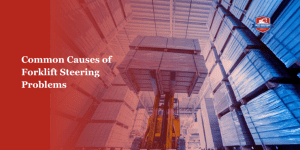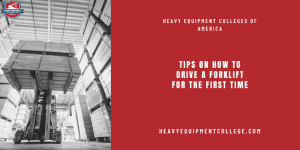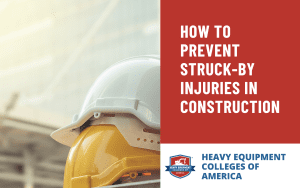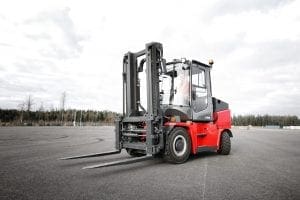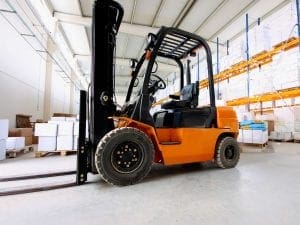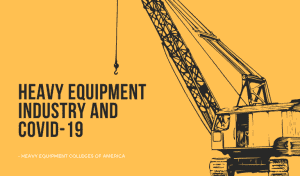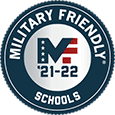Invented back in the early 20th century, forklifts have had quite an impact on the storage and shipping industry. While the designs and uses for forklifts have changed since then, they still play a major role in industrial workplaces today. Whether it’s moving new shipments of goods or removing snow, the use of forklifts in industrial settings will likely continue to grow for years to come.
Interested in a career as a forklift operator? There are specific certifications and information you need to know before operating one. Here’s a guide on how forklift works, what setting you can find them in, and the different forklift types.
Where Is It Used?
You can find forklifts in various industrial settings such as construction sites, storage facilities, recycling plants, and more. Below is a more in-depth look at where and how they’re used in these settings.
Storage Facilities
Since forklifts are for loading and unloading goods, they’re commonly used in storage facilities and warehouses. Different forklift types are used inside warehouses depending on the weight of the goods being transported and the setting.
Construction Sites
On a typical construction site, forklifts carry heavy materials over long and short distances. Materials transported by the forklift range from brick pallets to steel joists. Forklifts are a great asset to any construction site because they combine the functions of a lifting tool and the mobility of a vehicle.
Dockyards
In dockyards, forklifts often transport shipments of goods like steel and wool. Forklifts found in dockyards are usually heavy-duty. They take bulky cargo containers from delivery trucks and transport them to storage regions and then ships.
Recycling Facilities
Forklifts have various uses in recycling facilities, such as unloading containers full of recyclable materials before they reach the sorting bays. You can also find forklift trucks loading and unloading elevators, tractor-trailers, straight trucks, and railway cars.
Snow Plows
Inclement weather—such as snow—can impact an outdoor work setting. Instead of calling up a local plowing company, you can add a purchasable attachment to a forklift to serve as a snowplow. Simply remove the attachment to restore a forklift to its original function.
Parts of Forklifts
A common forklift is composed of key parts that allow it to lift and transport goods and materials. These parts are the frame, counterweight, power source, carriage, and mast. Here’s a breakdown of each component.
Frame
The frame of a forklift serves as the machine’s base that all following key components attach to. For that reason, the frame is the most important piece of all.
Counterweight
The counterweight is attached to the rear part of the forklift’s frame. The function of this component is to counterbalance the load lifted.
Power Source
A common forklift uses an internal combustion engine fueled by LPG, CNG, diesel, or natural gas. For an electric forklift, the power comes from either a fuel cell or a lead-acid battery.
Carriage
The carriage moves up and down and fastens to the mast rails. This component serves as the base to the forklift.
Mast
The mast consists of interlocking rails that give it horizontal control. It’s a vertical piece that lifts and pushes loads down.
Forklift Safety Guide
How Does It Work?
Now that you understand the key components that make up a forklift and where they’re used, it’s time to learn how they work. Forklifts use a combination of hydraulic systems and pulley systems to carry heavy loads. Each system is broken down further below.
Hydraulic
To lift and lower loads, the hydraulic system on a forklift uses a series of cylinders, pistons, and fluids. To operate the hydraulic system, an operator uses the lift handle to lower or raise the load. The lift handle connects to the pump, which pushes fluid through a tube that leads to hydraulic cylinders.
Inside the hydraulic cylinders, the fluid is trapped, creating pressure as more fluid enters. This creates an upward force, moving the piston up. The result is physical equilibrium—when the fluids’ force is equal to the load’s downward force.
Pulley
The fork that carries the load attaches to a frame with a pair of roller chain pulleys. At the top of the mast, you can find the pulley’s fulcrum. The hydraulic pistons will push the masts up, then the gears on the mast press against the roller chains. The mast then moves up, pulling the fork up.
Check out other Heavy Equipment Blogs here:
Forklift Controls
The two main controls of a forklift are for steering and lifting. On the surface, these controls seem simple, but there’s a reason that you must be certified before using them. Here’s a breakdown of each control.
Steering
Like a regular car or golf cart, a forklift uses steering controls such as an accelerator, brake, steering wheel, forward, and reverse. Forklifts differ in the use of rear-wheel drive: the steering wheel controls the wheels in the forklift’s rear. This gives operators better control and precision when transporting loads.
Lifting
The lifting controls consist of two levers: one for moving the load up and down and another for tilting the load back and forth. When you push the lifting lever forward, the load moves up; when moving backward, the load moves down. The tilt functions are a bit more complex than the lifting levers.
To tilt a load forward, air pumps into the cylinder chamber, increasing the pressure on the piston head. As a result, the mast tilts away from the frame.
To tilt it backward, air steadily releases from the chamber while air pumps into the cylinders located in the hydraulic system. When the pistons push the pair of cylinders forward, it causes the masts to lean towards the vehicle.
Forklift Types
Forklifts separate into seven distinct classes. Each class requires a certified operator before using it. Forklift classification depends on several factors such as its fuel, features, and applications of use. Here are the seven classes of forklifts.
Class 1: Electric Motor Rider Trucks
You can find this class of trucks in loading docks, storage facilities, and other indoor areas.
Class 2: Electric Motor Narrow Aisle Trucks
Similar to the above class, these trucks are mainly indoors, where aisles and passageways are narrow.
Class 3: Electric Motor Hand or Hand-Rider Trucks
This class of forklifts often refers to a ‘pallet jack’ and is controlled by the rear.
Class 4: Internal Combustion Engine (ICE) Trucks With Cushion Tires: Class 4 forklifts are typically in dry, indoor settings and come equipped with tires that make them perfect for low clearance settings.
Class 5: Internal Combustion Engine Trucks with Pneumatic Tires
Similar in name to the above class, this type of forklift is used in indoor and outdoor settings.
Class 6: Electric and Internal Combustion Engine Tractors
Sometimes referred to as tow tractors or tuggers, class 6 forklifts come in various settings. Its power source can be switched out between combustion engine and battery power.
Class 7: Rough Terrain Forklift Trucks
As the name suggests, this forklift class comes equipped with large tires that allow it to move easily over rough terrain.
How To Become Forklift Certified?
After looking at all of this information about how forklifts work, you may wonder why you should pursue your forklift operators’ certificate. Being forklift certified can help you get ahead in your career. Employers often pay for their employees to be certified, so showing up with your certificate gives you the upper hand.
To become a certified forklift operator, you’ll need to do a few things first. First, identify which type of forklift you want to be certified for. Next, attend an OSHA-approved course. From there, you’ll need to pass a written exam. And after the exam, you’ll get some hands-on training followed by a final exam. Pass all of these steps, and you’ll have your forklift certification.
Why Choose Heavy Equipment Colleges of America
Want to learn more about how forklifts work or how you can get forklift certified? Heavy Equipment Colleges of America has programs that can help you learn how to use heavy equipment similar to forklifts. The expert instructors at HEC can train you to use commonly heavy equipment found on construction sites, warehouses, and other industrial settings.
HEC programs are geared towards students, but programs vary by location. Check out our website to see if locations near you have the programs you desire.
Get ahead in your career with programs at Heavy Equipment Colleges of America!

